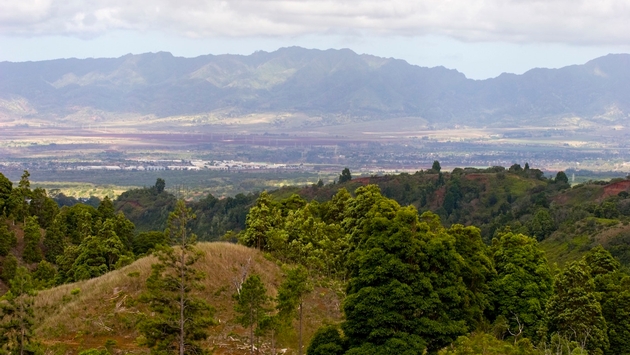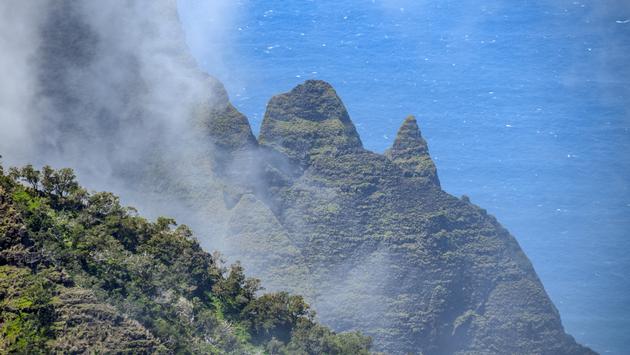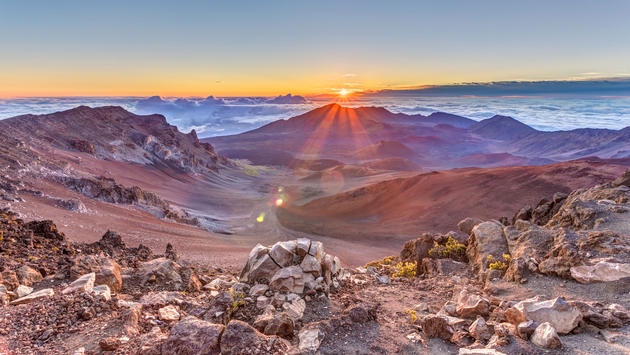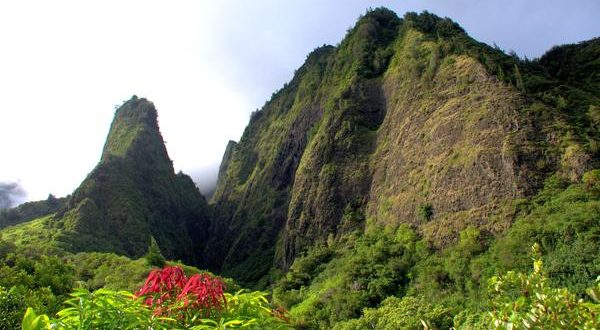[ad_1]
The Big Island is made up of five volcanoes, including the world’s most active one, Kilauea. If fresh lava and geology are your thing, there’s no question you want to spend a lot of your time in Hawaii Volcanoes National Park.
But let’s not forget about Hawaii’s other volcanoes, the ones that came before the Big Island was even born. Though no longer active, or in some cases no longer even resembling a volcano, the much-older volcanoes of Kauai, Oahu and Maui still have a lot to offer in the way of interest and activities.
Here are five volcanoes not on the Big Island to know about:
Koolau + Waianae (Oahu)
Oahu is made up of two volcanoes, the Koolau in the east and the Waianae in the west. Their eruptions overlapped two to three million years ago, forming the island as we see it today. Both volcanoes have been deeply eroded, leaving them to look more like mountain ranges than what we’ve come to picture as a volcano. But, rest assured they are alive with opportunities.
The Koolau is arguably one of the most beautiful volcanoes in all of Hawaii. It’s incredibly green thanks to the tropical, wet weather it receives on the windward side, busting with fruit trees and dense rainforests. That water has also carved the former titan into a beautiful, natural sculpture, with sharp, jagged cliffs and stark changes in topography. From Waimanalo to Laie, it is an intricate coastline rivaled only by the Napali coast on Kauai.
The Koolau also has some of the most pronounced craters and vents: Punchbowl, Diamondhead, Koko, and Kaau craters are all accessible, in use, and/or and open for exploration.

The Waianae “range,” as it is now called, is bone dry, and offers much different terrain than the Koolau. A climb up Mt. Kaala, the island’s highest peak, shows its full potential—unobstructed, panoramic views of the entire coastline. Its northern tip, Kaena Point, lives on as a seabird sanctuary, accessible only on foot, and remnants of its volcanic past show up in numerous coastal tidepools. Its western shoreline is known for its beautiful, sunset-facing beaches, including a famous surf break, Makaha.
Waialeale (Kauai)
The oldest volcano left standing in the major Hawaiian Islands, Waialeale’s eruptions formed Kauai about 5 million years ago. The weather has worn it down over time, often dramatically, and we see that today in one of the world’s most spectacular and picturesque coastlines, the Napali Coast, and in one of the Pacific’s largest and deepest canyons, Waimea Canyon. Though it was flattened over time, Waialeale still reaches for the sky, with its highest peak, Kawaikini, soaring past 5,000 feet.

Mauna Kahalawai + Haleakala (Maui)
The island of Maui was formed by two volcanoes: Mauna Kahalawai and Haleakala. Like the Koolau and Waianae of Oahu, the two eruptions met in the middle to form the island.
The former translates into “holding house of water,” which gives you an idea of what you can expect from its inner depths—lush, green valleys, carved by water, with dramatic peaks and summits. It is home to the historic Iao Valley, where one of the bloodiest battles in Hawaiian history was fought (Kamehameha invaded and conquered Maui).
Haleakala might be one of the most explored volcanoes in Hawaii (right up there with Kilauea). It translates to “House of the Sun,” a name that captures its importance and reverence in Hawaiian mythology.

Sunrise on its summit is so popular it has had to take measures in recent years to limit visitors; a good portion of it is protected as a National Park. Backcountry camping and hiking please the outdoorsy, and the fertile slopes, home to small towns, cowboys, local farms, and even a winery, please many others. The eastern portion of Haleakala is where you’ll find the Road to Hana, one of the most famous drives in the world.
[ad_2]You can read more of the news on source
 Travelsmart
Travelsmart



